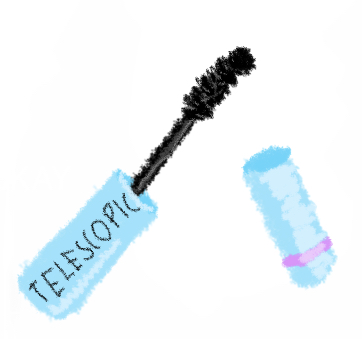De-influencing combats consumer culture, rightfully wins

Influencers are often paid to promote items, leading to dishonesty in their product reviews.
June 9, 2023
Picture this: you open up Tiktok, and every video you scroll through seems to bombard you with overly exuberant reviews of pricey polyester products from big-time companies.
Unfortunately, this is the reality of today.
In the age of social media, influencers have used online platforms to achieve impactful advertising. Many have hyped up products to the extent that products sell out just because of one viral TikTok. However, the public has questioned whether these products are really as good as influencers make them out to be. This has led to a new “trend:” de-influencing. De-influencers work to test products and see if they are really worth the hype– and their content is extremely prevalent in social media currently, racking up almost 500 million views for videos tagged with “#deinfluencing” on TikTok alone in just a few months. While de-influencing may have a few downsides, in this increasingly materialistic society, it offers a way to curb consumerism, embrace transparency, and promote sustainability.
For many years, writers, bloggers and vloggers have shared their input and reviews of products ranging from kitchenware to cosmetics. However, within the last two decades, social media rates have skyrocketed, with studies showing that the percentage of U.S. adults using social media has jumped from under 5 percent to over 72 percent. Naturally, as the popularity of social media continues to rise, the formerly honest and well-intentioned product reviews have turned into nothing more than money grabs. It seems like some influencers may be over-promoting products simply due to brand deals and being paid by major companies.
For instance, earlier this year beauty influencer Mikayla Noguiera posted a L’Oreal-sponsored TikTok video in which she enthusiastically promoted and applied the company’s mascara “Telescopic Lift.” Following the video’s publication, viewers began accusing Noguiera of wearing false eyelashes while advertising the product. The controversy has sparked discussion about authenticity in the social media world, and even raised the question of whether we can trust influencers, especially those who are paid for product promotion.
Aside from creating a rift in trust between influencers and their followers, the hyping up of products has also led to immense increases in consumerism. Analyses show that 54 percent of people have sporadically purchased products simply after seeing it on Instagram, and in 2022, over a third of participants in a survey conducted by the Journal of Business Research admitted to overspending simply to “keep up with the fun.” Growing materialism counteracts sustainability efforts – in fact, one study found that as materialism continues to centralize as a pillar of the twenty-first century, belief in the existence of environmental problems decreases.
In the midst of the problems influencing poses, some social media creators have taken another route: de-influencing. De-influencing has been serving as a crucial asset in promoting authenticity and trustworthiness across the realm of marketing through social media platforms. By disseminating unfiltered, honest videos created by non-influencers, this trend allows viewers to see a variety of products in a more objective light. Moreover, de-influencing puts viewers in a position where they know that the creators of each video are not influenced by monetary purposes or branding deals.
According to a study conducted by First Insight, 62 percent of Gen Z surveyed preferred to buy from sustainable brands. Due to its encouragement for people to purchase less and rethink their spending decisions before taking action, de-influencing can offer a boost to this inclination.
Some say that de-influencing is no different from normal influencing, but that is not the case. Although after mentioning the flaws of a certain product, de-influencers often recommend different products for audiences to buy, they do so in order to point to cheaper, more practical alternatives that are also high-quality, such as an $8 sunscreen tube from Trader Joe’s. This stands in contrast to how traditional influencers would take a more idealistic approach in only showcasing the advantages of certain products, which likely come from larger brands. Furthermore, influencers regard advertising and other deals as part of their job, which eliminates the possibility of being able to share their fully honest opinions on preferred products.
Living in an era where the internet has become such a crucial form of communication creates uncertainties surrounding truth and misinformation. Despite some of its limitations, de-influencing not only offers a solution to this prevalent issue, but also bears fruit for cutting back on the expanding consumption of goods and protecting the environment. So the next time you’re tempted to buy that expensive pair of sunglasses that your favorite celebrity made a TikTok about, stop, take a look at what the de-influencers say, and reconsider your choice.


